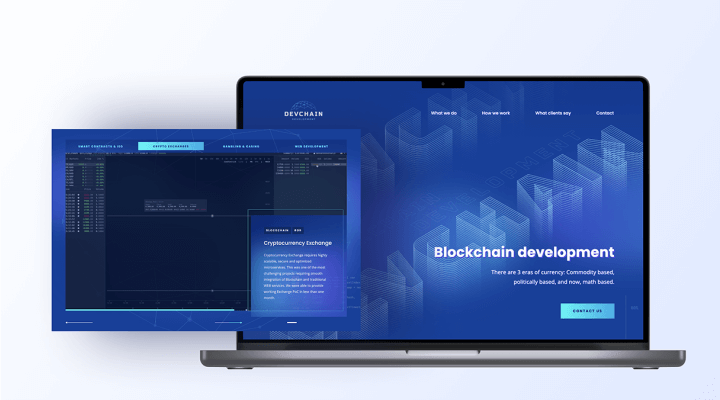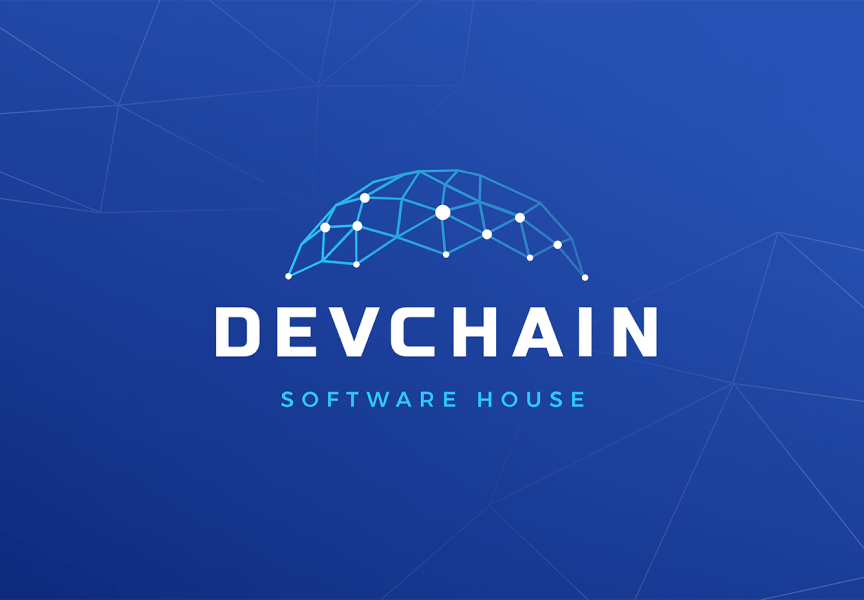DevChain


The service, the software, and the technical support from Backblaze have all been perfect. And our users are happy because images load fast, giving them a smooth experience on site.
Damian Gadziak, Founder & CTO, DevChain
Blockchain software developer DevChain faced massive, unexpected invoices when their AWS startup credits ran out. The charges threatened to shut down one of the company’s most successful projects—URSTYLE, a social commerce site with 200,000 users and growing. With up to 20,000 images processed each day, they needed an efficient, affordable storage alternative to Amazon S3, fast.
DevChain decoupled from AWS by taking a vendor-agnostic, microservices approach. They moved URSTYLE data to Backblaze to unlock three major benefits. First, Backblaze integrated seamlessly in the new tech stack, requiring zero code modifications. Second, by using Backblaze’s free Universal Data Migration service to transfer their data, URSTYLE users saw no unusual disruptions and DevChain’s egress costs for the initial move were fully comped. Finally, Backblaze’s membership in the Bandwidth Alliance with Cloudflare meant $0 for egress going forward.
With Backblaze B2 Cloud Storage in place, DevChain has fully migrated off AWS, bringing costs in line with their business needs, providing URSTYLE users a speedy content upload experience, and freeing the DevChain team to focus on development rather than billing. Their new tech stack provides the performance and scalability they need as they pursue new and exciting ways to build on blockchain technology.
Founded in 2017, DevChain is a software development company that specializes in web development and blockchain-based solutions for a variety of clients. The company’s projects span a wide range of areas, including smart contracts, initial coin offering or ICO consultation, crypto exchanges, casino and gaming, NFTs, social commerce, and more. The DevChain team is passionate about using cutting-edge technologies and frameworks, as well as their own implementation of Agile methodologies. DevChain is based in Warsaw, Poland.

Why stop at simply investing in cryptocurrency, when you can become a part of the technology’s future success? For software developer and seasoned cryptocurrency investor, Damian Gadziak, launching DevChain allowed him to do just that. By building everything from web apps to NFT games to exchange extensions on the underlying blockchain technology, he could have a hand in solidifying blockchain’s staying power. After all, the health of a given cryptocurrency isn’t always based on its market price or the size of its investor base, but how many applications use its consensus mechanism.
To get DevChain off the ground, Gadziak took advantage of free startup credits from AWS—an incentive few founders pass up when they’re working to grow a business. It worked as intended—one of DevChain’s early wins and most successful projects, URSTYLE, a social fashion app, took off with a big boost from not having to worry about infrastructure bills.


AWS is very attractive for startups because they offer credits. But when credits run out, their setup is not meant for businesses like us.
Damian Gadziak, Founder & CTO, DevChain
URSTYLE connects brands with users who create personal style collections from clothing, accessory, beauty product, and home decor images. When viewing a collection, users can then click through to brand websites to purchase items. With virtually no marketing, the site took off, so DevChain began investing more resources to build it out, continuously adding new features and functionality.
Today, the site serves 200,000 users who post 1,000 collections per day, and brands who upload 9,000–20,000 product images per day using the URSTYLE Clipper Tool. With such a high volume of images moving through the system, the project’s success depended on the free storage and free egress they got from AWS. But when the credits ran out, DevChain’s monthly infrastructure bill jumped to thousands per month and brought growth to a screeching halt. The numbers just couldn’t work.
Gadziak realized they needed a more flexible and affordable tech stack if he wanted DevChain, and particularly URSTYLE, to succeed. He leaned on containerized architecture to begin the process of migrating away from AWS.
In addition to using S3 to store images, DevChain projects, including URSTYLE, were running on several, underutilized Amazon EC2 compute instances connected to Amazon RDS database and ElastiCache caching services. There’s a reason a whole cottage industry has popped up to help companies understand their AWS spend—their opaque pricing makes understanding your cloud usage (and thus predicting when you might run out of free credits) nearly impossible. Even for founders who know when the credit expiration will arrive, there’s no clear path to affordability—they're stuck with the same bill and the same result: cratered growth. “AWS is very attractive for startups because they offer credits. But when credits run out, their setup is not meant for businesses like us,” Gadziak noted.
Fortunately, the DevChain team was using Docker, along with the container orchestration tool Rancher, to deploy code to production. The containerized infrastructure gave them both stability and versatility to get some breathing room apart from their main Amazon infrastructure. And Docker’s portability made the process of migrating away from AWS much easier.
DevChain rebuilt URSTYLE as well as their other projects using a microservices architecture on dedicated virtual private servers and managed data services from a leading web hosting provider and experienced data center operator in Germany, eliminating EC2, ElastiCache, and RDS. The move helped the team optimize their app resources and better control expenses, but they still needed a storage solution that integrated into their new stack and brought costs in line with their operational approach.


Backblaze is so easy to use we were able to get everything up and running ourselves, and management takes almost no effort. For a small startup like ours, the more time we have to focus on development, the better.
Damian Gadziak, Founder & CTO, DevChain
When it came to image storage, DevChain looked for a provider that could integrate seamlessly with their new infrastructure and provide a solution that would be affordable over the long-term. Gadziak heard about Backblaze from another software developer and tested a proof of concept to compare it to Amazon S3.
“Using the Backblaze S3 Compatible API, we connected Backblaze to our whole infrastructure with zero code modifications. That was huge for us,” Gadziak said. “Backblaze B2 had everything we were looking for.”
Another major benefit of moving to Backblaze B2 was its close partnerships with other third-party service providers, including Cloudflare, where egress between the two services is free. As a result, DevChain pays nothing when distributing content from Backblaze B2 through the Cloudflare CDN.
Once the decision was made, migrating images from S3 to Backblaze B2 was fast and easy. The team used Backblaze’s Universal Data Migration service to move their data in only 10 hours with no disruption to URSTYLE users, no impact on workflow, and at no charge. “Backblaze is so easy to use we were able to get everything up and running ourselves, and management takes almost no effort. For a small startup like ours, the more time we have to focus on development, the better,” said Gadziak.


With Backblaze, we’ve been able to reduce our storage costs by 80% and our overall infrastructure costs by 65%.
Damian Gadziak, Founder & CTO, DevChain
After the image migration to Backblaze B2, all of DevChain’s projects are now fully off the AWS platform and running on a more flexible, cost-efficient tech stack that will better support long-term business growth. “With Backblaze, we’ve been able to reduce our storage costs by 80% and our overall infrastructure costs by 65%,” said Gadziak. But DevChain benefits from more than just affordable storage, their users get better performance and their developers have direct access to Backblaze solutions engineers should they need it.
“The service, the software, and the technical support from Backblaze have all been perfect,” said Gadziak. “And our users are happy because images load fast, giving them a smooth experience on site.”
Going forward, the DevChain team intends to use Backblaze B2 in future projects and recommends Backblaze to clients looking for cost-effective data storage as well. “We benefit when we can recommend better, less expensive solutions like Backblaze to our clients. It’s a win-win-win for all of us.”
Currently, they’re working on a blockchain-based community platform for Cannumi, a cannabis company that includes NFT card images, as well as Legends of Elysium, a game that involves building an NFT marketplace with tokens—all of which will be stored in Backblaze B2. As blockchain continues to evolve, DevChain now has a tech stack that can support them as they pursue ever more creative uses of the innovative technology.

The Backblaze B2 Storage Cloud is purpose-built for ease. It offers always-hot, S3 compatible object storage that supports your workflows via third-party software integrations, APIs, CLI, and web UI. And it’s priced for easy affordability at rates a fraction of other cloud providers. Businesses in more than 175 countries use the platform to host content, build and run applications, manage media, back up and archive data, and protect and recover from ransomware.